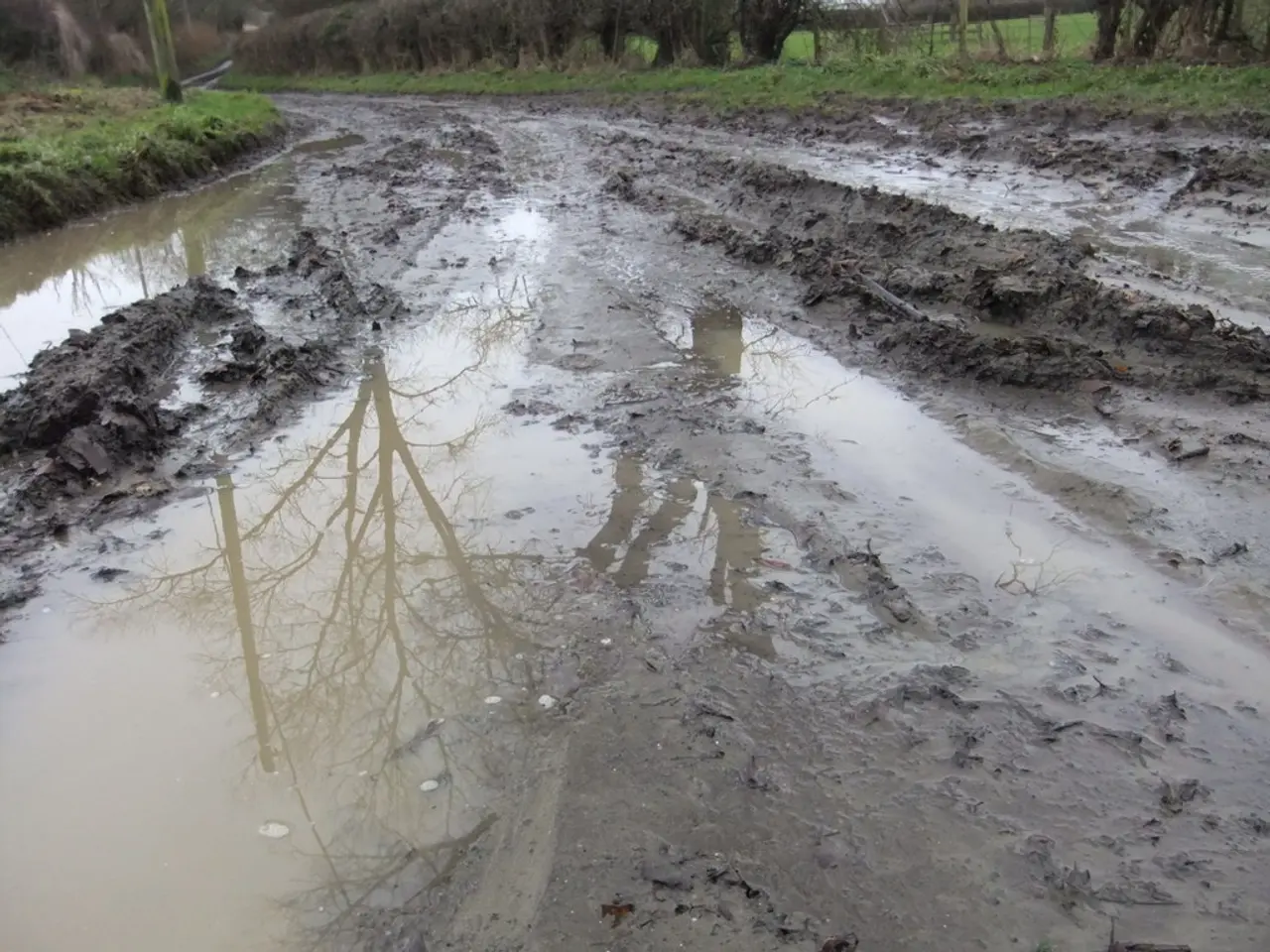Enhanced Watering in Gardens through Advanced Top Soil Humidity Sensors
In the realm of modern farming and gardening, soil moisture sensors have emerged as indispensable tools for monitoring and managing soil conditions. These devices, employing various technologies, provide accurate measurements of soil moisture levels, crucial for optimising irrigation, conserving water, and enhancing crop health.
**Technologies Powering Soil Moisture Sensors**
1. **Time-Domain Reflectometry (TDR) Sensors**: By utilising waveguides to measure the dielectric constant of the soil, which changes with moisture content, TDR sensors send electrical pulses and analyse the reflected signals to calculate precise moisture levels. Known for their high accuracy and suitability for outdoor deployments, TDR sensors are a popular choice.
2. **Capacitance Sensors**: These sensors measure the capacitance between two electrodes embedded in the soil. As the soil's moisture content varies, the dielectric constant of the soil changes, allowing for moisture calculations. Simple, low-cost, and suitable for various soil types, capacitance sensors are widely used.
3. **Resistive Sensors**: These sensors measure the resistance change in a material when exposed to varying moisture levels. Water absorption changes the conductivity, which is inversely related to humidity. Resistive sensors are cost-effective and easy to integrate into digital circuits.
4. **Satellite-Based Sensors (Radar and Microwave Radiometers)**: These instruments provide data over large areas, useful for monitoring on a large scale. Radar instruments send signals and interpret backscatter to estimate soil moisture, while microwave radiometers measure natural emissions influenced by soil moisture.
5. **Soil Moisture Sensors with FDR (Frequency Domain Reflectometry)**: Similar to TDR but operating by measuring the frequency-dependent changes in the soil's dielectric properties, FDR sensors offer high accuracy and simplicity.
These technologies enable precise monitoring of soil moisture, transforming agriculture and gardening practices by optimising irrigation, reducing water waste, and improving crop health.
**Embracing Smart Gardening with Soil Moisture Sensors**
1. **Setting Parameters for Automated Irrigation Systems**: Customise the settings based on your plants' specific needs, taking into account factors like preferred moisture levels.
2. **Water Conservation Through Smart Gardening**: Using soil moisture sensors can lead to a significant reduction in water usage, with studies showing a potential reduction of up to 50%.
3. **Real-time Data for Quick Reactions**: Real-time data from soil moisture sensors allows for quick reactions if something is off in the soil moisture levels.
4. **Choosing the Right Sensor for Your Needs**: Factors to consider when selecting a soil moisture sensor include type (analog or digital), depth of measurement, wireless or wired, and battery life.
5. **Preference for Digital Sensors**: In choosing a soil moisture sensor, many gardeners prefer digital sensors due to their clear readings.
6. **Monitoring Regularly**: Even with automation, it's important to regularly check the readings from the soil moisture sensor to adjust settings if necessary.
7. **Integrating Automated Irrigation Systems**: Link the soil moisture sensor to the irrigation system to enable automatic watering when soil moisture levels drop.
By embracing smart gardening with soil moisture sensors, gardeners can enjoy benefits for both their wallet and the environment, leading to reduced water bills and a positive impact on the environment.
- The integration of smart-home-devices, such as soil moisture sensors, can revolutionize home-and-garden practices, offering solutions like automated irrigation systems for optimizing water usage and promoting greener lifestyles.
- With the precision offered by technology-driven gardening gadgets like soil moisture sensors, keen gardeners can implement water conservation strategies, potentially cutting water usage by up to 50%.
- As more gardeners opt for gardening gadgets like smart soil moisture sensors, they not only contribute to a more sustainable home-and-garden lifestyle but also enjoy the benefits of lower water bills and reduced environmental impact.




